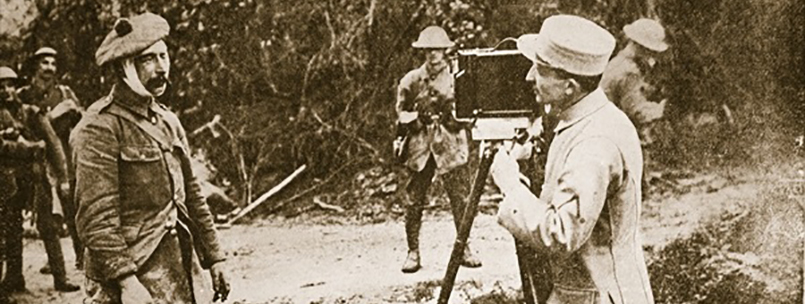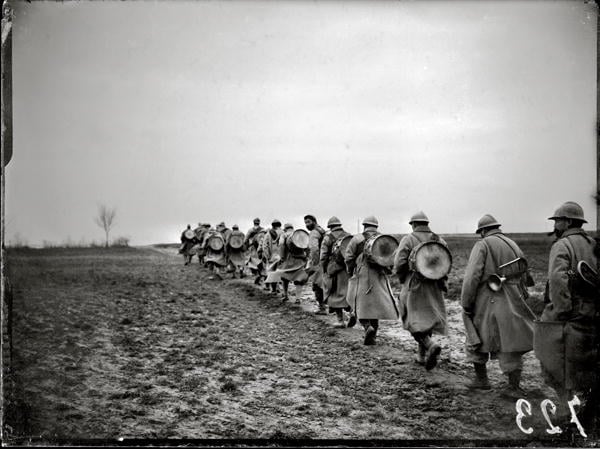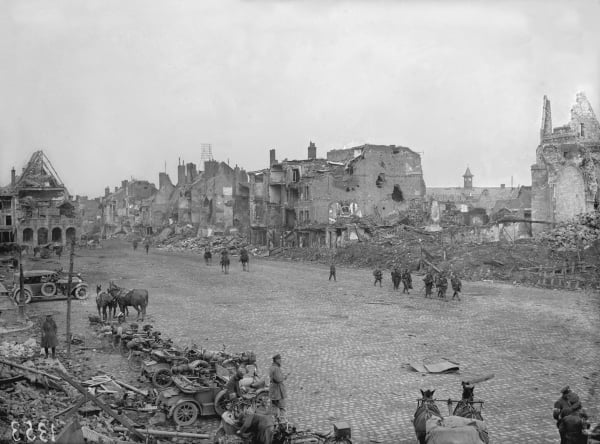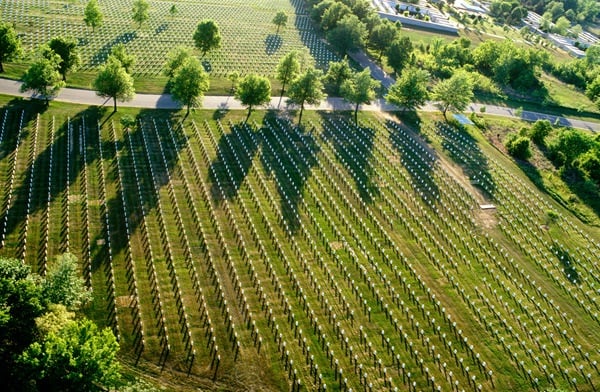
The Somme – Footage from the Front
The Battle of the Somme is, rightly so, best remembered for the stupefying number of casualties that were inflicted on both sides between July 1st and November 18th 1916. Estimates vary greatly but some historians suggest the number of killed and wounded exceded 1 million. It was remarkable even in the context of World War 1.
The British public at the time was not unaccustomed to war and loss, albeit never on such a vast scale, but what marked this battle from the others that had come before was the stark reality journalists were able to convey to the people back home. This was achieved through the newly widespread use of film and photography.
With the battle’s 100th Anniversary, the bravery of the journalists, armed only with their cameras, provides an interesting subplot to the stories of the soldiers they recorded.
This blog will not attempt to tell the story of the battle, inevitably unable to do it justice. Instead the focus will be on narrative behind the camera.
Newspapers
The use of photographs in newspapers was a relatively new idea at the turn of the century but became championed by the Daily Mirror in the years leading up to the start of the First World War. Photographers such as Ivor Castle and the Grant Brothers travelled all over the world documenting conflict. There was an insatiable appetite back in Britain for this exciting, inovative form of news. However it was not until 1916 that Ernest Brook was sent out to the Western Front, the first photographer to work there. His photographs were criticised for being too posed, his background as a portrait photographer not suited to documentary photography.
Jacques Moreau
Jacques Moreau was prolific in capturing the day to day events of the Western Front. An elusive character by the end of his life, very little is known about him although Bridgeman do hold over 2000 of his glass plate negatives that were purchased in 1987. Moreau’s images are not overtly ‘artistic’, they seem simply to be documentation of the reality of war. Photographs, unlike film, allow for prolonged contemplation. In the case of the Moreau’s work these pictures provide a moment of reflection on life and death but also more literal reality; the mud, the rain and the destruction. From image to image, he constantly challenges the fragility of human life and nature while still retianing a sense of decency and compassion for the plight of his subjects.
Propaganda
Apart from its unprecedented casualty rate, The Battle of the Somme is perhaps so intrinsically engrained in the public consciousness due to the creation of a propaganda film by The British Topical Committee for War Films. Although news reels of the events in France were shown in cinemas across Britain it was normally the comedies of Charlie Chaplin that drew in the crowds. The Government felt however that the portrayal of this epic conflict in feature film form could be shown not only to audiences back at home but in countries across the Commonwealth and in neutral countries like America, providing a morale boost and encouraging conscription.
Filming
In 1916 the Topical Committee sent out two cinematographers to France, Geoffrey Malins and John McDowell to document the very beginning of The Battle of the Somme in a series of short newsreels. Both men shot their film between 26th June and 9th of July, often placing themselves in significant danger of bombardment by both the enemy and their own troops in order to capture the true reality of the fighting. From their work the viewer can see the contradictions of war; vicious conflict against common humanity. Interestingly the most famous part of the film they created, the moment when the allied troops go ‘over the top’ was in fact staged, the front line being declared too dangerous for the two journalists. It reminds the viewer that these works, although in the main filming of the actual event were also a form of propaganda, they existed to fulfil a very clear brief.
Reception
Once completed the film was not released in news reels as originally intended but was instead turned into a feature film. It proved universally popular, being watched by millions all over the world. The film lacked any recorded sound but was set to a score of different musical genres.
Footage of an event such as the Somme is now invaluable. It captured the Western world on the brink of mechanisation and industrialisation, a world being dragged into modernity. On the other hand it provides a moving image (in both senses of the word) that highlights the real humanity of the events in the summer of 1916 that can become lost among the vast statistics and multitude of images.
Each photograph and piece of footage gives life to the horrors of death in war, allowing us, even forcing us, never to forget.
Find out More
Collections represented by Bridgeman for licensing include the National Army Museum, the Imperial War Museum, the Canadian War Museum and Peter Newark Military Pictures.
For further inspiration read our World War One Centenary feature, where we have categorised our content to aid your research. To discuss licensing archive footage and images please email uksales@bridgemanimages.com.
Save





